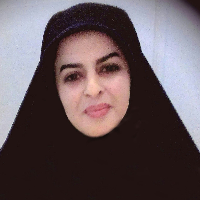A Study of the Median Board Picture in the Eastern Staircase of Apadana (Case Studies: Containers, Daggers and Rings)
Persepolis has two sets of east and north staircases embossed on the east staircase of 23 deputations. The Median board of trade in the West of the Iranian Plateau is one of those that has the most people. The board carries an amphora, a pair of bowl, a dagger and two pairs of rings on the day of Nowruz, which are led by a senior officer to the post. In this study, we have compared the commodities of this board with the metal species found in domestic and foreign museums through library studies, field survey and museum reviews, and visiting websites of the museums. The findings of the study show that the amphorae and bowls of this board were used in ceremonial and court parties that they are open-plan form. the Achaemenid artists made such metal containers of gold, Silver and sometimes bronze and have been used hammering, engraving and molding methods. they have used animal, plant, geometric and combinatorial designs to decorate some of their metal species. The dagger brought by the group, although it is part of the combat tool and has a military function, is used as a ceremonial and formal ritual on the day of Nowruz. Handle of metal species of this dagger are decorated with real animal’s head like lion and cow. Achaemenid artists were interested in such decorations and used rivets and molding to make this dagger. In addition to containers and daggers, the Median board also carries rings that have formal and ceremonial use. These rings are made of gold and silver, which adorn some of their metallic species, which are also found in indoor and outdoor museums, using real animals such as lions and deer and griffin as a mythical animal. It should be noted that these rings are made so that both animals are facing each other and are symmetrical. The rings are made by molding, etching and riveting methods. Since the art of the Achaemenid period was courtly and the artist had no practical freedom, so the metal species of goods such as amphorae, bowls, daggers and rings that are nowadays in major museums of the world, had belonged to the affluent class of Iranian society at that time and they have used combinatorial motifs in the decoration of these goods. Most of the animal designs in the metal species of the goods in the museums (amphorae, cups, daggers and rings) relate to lion and cow that they are symbol of power and wealth in Achaemenid art
- حق عضویت دریافتی صرف حمایت از نشریات عضو و نگهداری، تکمیل و توسعه مگیران میشود.
- پرداخت حق اشتراک و دانلود مقالات اجازه بازنشر آن در سایر رسانههای چاپی و دیجیتال را به کاربر نمیدهد.


